Does period underwear actually work? Study finds most period products have less capacity than advertised
Wondering why your menstrual products—think tampons, pads, even period underwear—don’t seem to be holding up to your flow? Most aren’t tested for absorbency with actual blood, according to a recent study. As a result, doctors could be missing the opportunity to inform people that they have heavy menstrual bleeding, which can be a sign of other underlying health issues.
A report out earlier this month in BMJ Sexual & Reproductive Health found that many menstrual products had inaccurate liquid capacities compared to what the products advertised. When a team from Oregon Health & Science University tested the products with actual blood, the products didn’t absorb as much as they advertised.
The problem with inaccurate menstrual absorbency estimates
As a result, the authors say doctors may not be diagnosing heavy menstrual bleeding accurately—or enough. This means women who have it may be ignored—or even unaware. Heavy bleeding can be a red flag for other serious conditions like cancer and uterine fibroids.
Doctors typically diagnose heavy bleeding, or menorrhagia, based on a visual chart, or they may ask you how often you need to change your menstrual product. If you use two or more tampons that absorb 20 milliliters (mL) of blood in a two-hour span, that’s considered a heavy flow.
Menorrhagia symptoms, according to Mayo Clinic, include:
Soaking through one or more sanitary pads or tampons every hour for several consecutive hours
Doubling up on protection to control flow (maybe wearing a pad in while you also have a tampon in)
Waking up to change protection at night
Bleeding for longer than a week
Passing blood clots larger than a quarter
Limiting daily activities because of your menstrual flow
Symptoms of anemia, such as tiredness, fatigue, or shortness of breath
Industry absorbency guidelines were created only using tampons. Historically, they used a liquid (saline or water) to test absorbency capacity of other menstrual products, which is not the same viscosity as blood. The standards haven’t been updated since they were created the 1980s, a whopping four decades ago.
If you use a menstrual cup now, there’s no metric to see if you have a heavy period. The cups hold about four times as much as a tampon, but because the metrics were based on tampon absorbency, it’s hard to know how to quantify your flow.
“We realized that there wasn’t really a metric for diagnosing heavy menstrual bleeding in folks who use those products,” study co-author Bethany Samuelson Bannow, MD, an assistant professor of hematology at Oregon Health & Science University, tells Scientific American.
“We really felt that [the absorbency metric] needed to be updated,” she adds.
It’s not only startling to find out that you may have been duped in terms of buying something that didn’t live up to the label claim. But Samuelson Bannow says it has medical implications.
“We’re probably missing a lot of heavy menstrual bleeding.”
Bethany Samuelson Bannow, MD, assistant professor of hematology at Oregon Health & Science University
How much your period products hold—or don’t hold
Her team looked at 21 different menstrual products spanning the gamut—from maxi pads and tampons to menstrual cups and period underwear, using expired human packed red blood cells (RBCs), which could no longer be used for clinical purposes. While menstrual blood is likely to be more viscous than RBCs, the researchers believed they gave a more accurate depiction of capacity than water or saline.
Menstrual underwear—aka period panties—were the least absorbent period products on the market, soaking up just 1 to 3 mL of blood, depending on their size. (They were less absorbent than light pads, which captured 3 to 4 mL.) Depending on the size, tampons captured 20 to 34 mL of blood. Heavy and ultra tampons and pads held anywhere from 20 mL to 50 mL.
Still others were able to hold more blood than advertised, which researchers attributed to being tested with water. Heavy pads that say they can hold 10 to 20 mL actually held up to 52 mL of blood. Menstrual discs or cups held the most—the Intimina Ziggy cup held up to 80 mL while the average held 61 milliliters.
To get a better idea of what your actual flow looks like, take note of how often you change your period products or have to double up on period protection. Ask your doctor if they suspect heavy menstrual bleeding based on what you tell them, pointing to this study. If you’ve raised concerns before about your menstrual flow and been dismissed, it may be time to get a second opinion.
Curious about menstrual cups? Try our commerce editor's faves
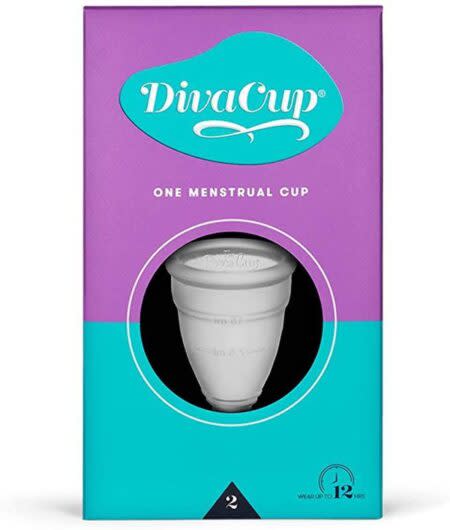
DivaCup
• $32.99
1. DivaCup
It’s hard to say whether the DivaCup is the most popular cup on the market because it’s the best or because it’s the one most widely available on drugstore shelves. In any event, it’s been around since 2003 and managed to convert me. It comes in three different sizes.
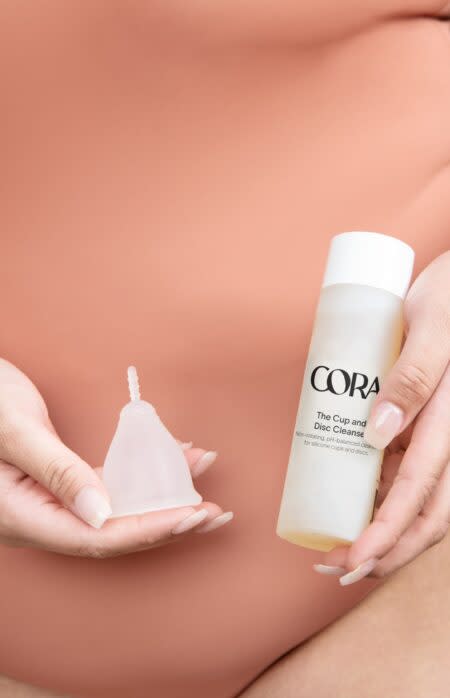
Cora
• $39
2. The Easy Does It Cup
If you’re new to the cup game, Cora’s style makes it a great option for beginners (and pros alike!). It’s narrower at the bottom than most, showing you exactly where to pinch and fold for insertion. It’s also made from notably thinner and more flexible silicone than any that I’ve tested. (And trust me, I’ve tested a LOT.) But the best part each purchase gives health education and pads to girls who need them. What’s not to love about all of that?
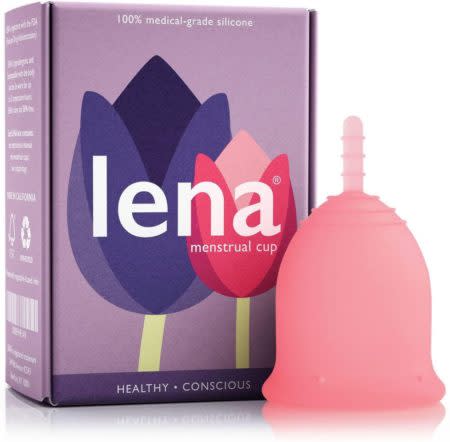
Lena
• $29.99
3. Lena cup
I chose the Lena when looking for a replacement based on the recommendation of the founders at Put a Cup In It (who also have a great quiz to help you find your match). It’s their top pick for starting out and I have to agree. The tulip shape of the Lena makes it easy to insert and also seems to help keep it from leaking.
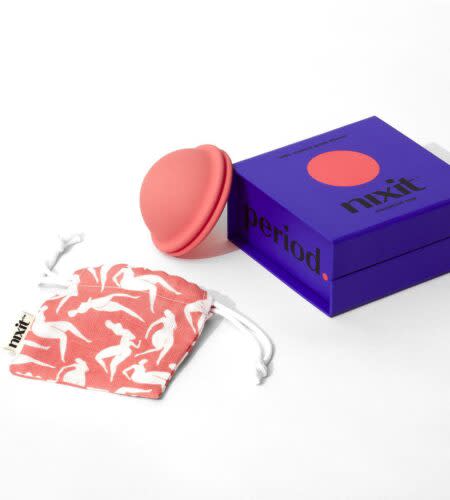
Nixit
• $39
4. Nixit menstrual cup
A slightly different design than the typical suction style cups, the Nixit is designed to rest up against your cervix like a diaphragm. For people who might find the stem of other cups uncomfortable, this smooth cup shape makes a great alternative. It also comes in one convenient size, so no head-scratching to figure out which one you need.
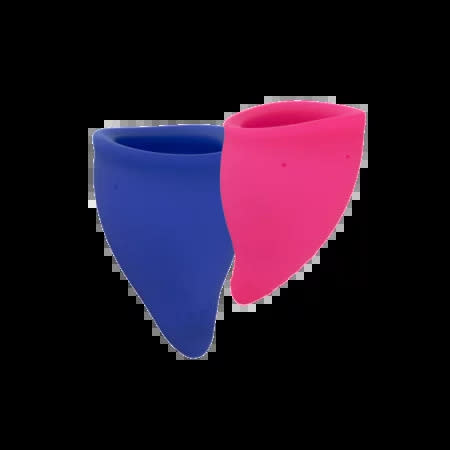
Fun Cup
• $39.99
5. Fun Cup Menstrual Cup
Similarly, the stemless, taper-tipped design of the Fun Cup is incredibly comfortable. (Considering it’s designed by one of the most inclusive and innovative sex toy companies out there, we’re not surprised.) The silicone is a bit firmer, with a thicker ring than styles like the Cora, but it’s still easy to insert and remove. (It also helps to keep it in place throughout the day.) If you’re new to period cups, the Explore Kit is a great option as it includes two sizes to help you figure out what works. Know yourself already? It’s available in two additional sizes as well.
